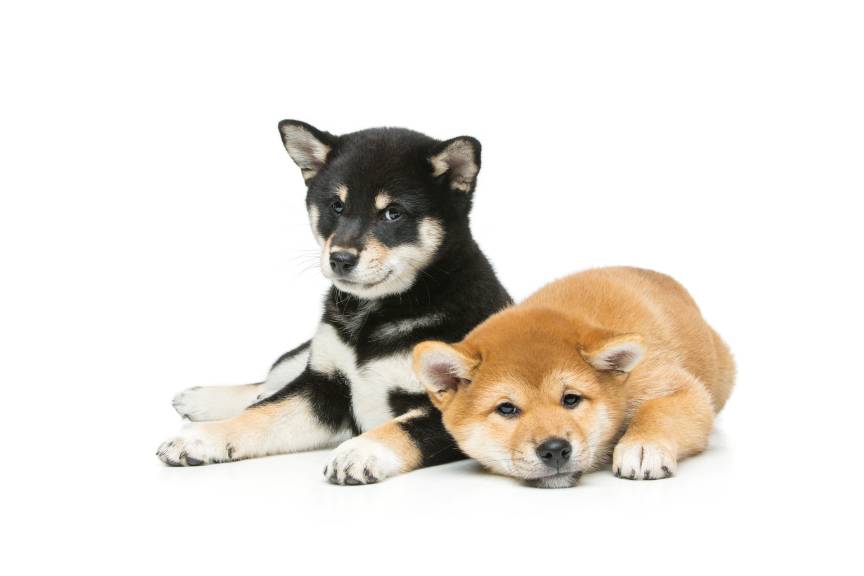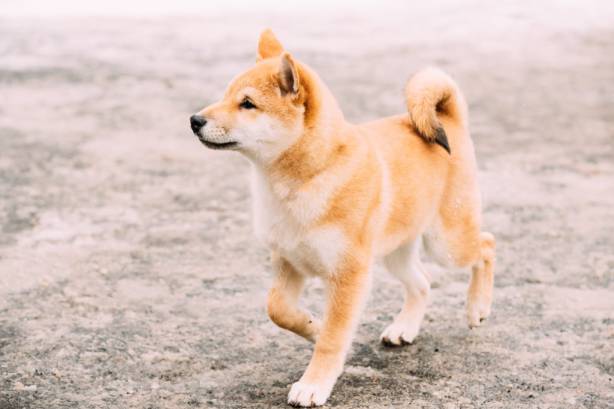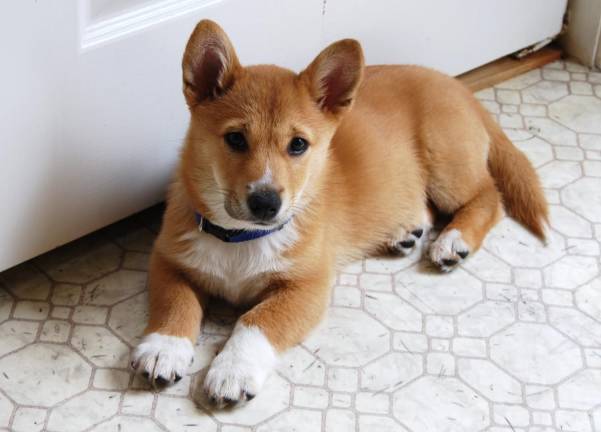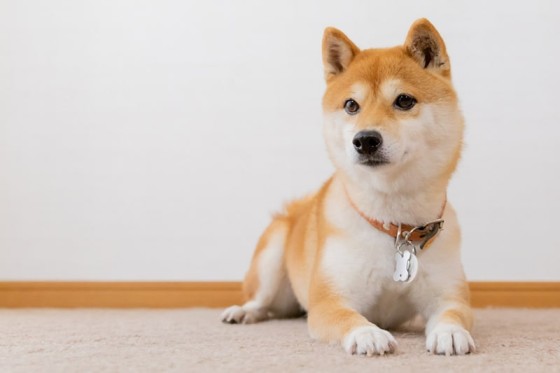Connect with a verified veterinarian in minutes. Licensed vets are available 24/7 to answer your questions. No need to worry about your furry family member.
Shiba Inu dogs are beautiful, reddish dogs that slightly resemble a fox! You may believe he’s a stuffed animal if you see one of these amazing dogs! However, we can reassure you Shiba Inus are beautiful dogs!
Did you know these dogs come in different colors? It’s true! Most people are familiar with red Shiba Inus; however, the breed does come in other colors.
In this article, we’ll take a look at the Shiba Inu and then share information about the different coat colors of these wonderful canines!
What is a Shiba Inu?
Shiba Inus are small dogs that originally came from Japan. The dogs were bred to flush small game and birds for their hunter pet parents. It’s thought this breed’s name came from the Japanese word that means “brushwood” (Shiba). “Inu” means “dog” in Japanese.
The history of this dog breed goes back to about 300 BC in Japan, making them an ancient dog breed. However, the dogs almost became extinct in the ravages of WWII in Japan. However, some Shiba Inus did survive in remote places. It’s from these dogs our Shiba Inus are descended today. The very first Shiba Inu came to the US in 1954 by a military family.
The very first litter of these dogs was born in 1979. The breed was then recognized by the AKC in 1993 in the miscellaneous class. However, the Shiba Inu breed was fully recognized in 1997 and was classed with the Non-Sporting Group of dogs.
This dog breed looks like a fox, with ears standing up and slightly squinty eyes. This dog breed has a curly tail, which curves over the dog’s back. It’s believed the breed is a mix of six spitz dogs that also come from Japan. The dogs are highly athletic and can move very fast.
Speaking of being athletic, Shiba Inus are known as escape artists! For this reason, it’s highly recommended that these dogs have a securely fenced backyard, which is dog-proof!
Because these dogs are filled with so much energy, they need at least an hour of exercise each day. This can be divided into a 30-minute walk in the morning and another in the evening. Shiba Inus also make jogging companions.
Shiba Inu Coat Colors
Shiba Inus come in various colors. However, the dogs’ distinctive white markings are called urajiro. Urajiro literally means “undersurface white” in Japanese. This is the very description of the white markings of the Shiba Inu.
The urajiro markings are usually found on the sides of the cheeks, mouth, under the jaws, neck, chest, and stomach. These markings are inherent in the breed, no matter the color of the coat, with one exception.
The AKC does not recognize Shiba Inus that are white. The organization views the white coloring as a major fault in the breed, which means these dogs can’t participate in dog shows. The urajiro markings are not apparent on the white Shiba Inu. However, the British Kennel Club recognizes the white Shiba Inu coat, and it is treated as a breed standard.
Now, we’re ready to take a look at the different colors the Shiba Inu dogs feature!
Shiba Inu Red Coat
Red is the most common coat color in Shiba Inus. It’s believed this was the original color of the dogs. Red is also the preferred color for dog shows and beauty competitions. It’s also the most popular color in Shiba Inu.
The red color is quite intense and almost looks orange in some dogs. This is the reason the dogs are said to resemble foxes.
Shiba Inu Black & Tan Coat
The black and tan Shiba In has a tri-colored coat. The coat is black, with red at the base of the fur, and tan points, combined with the urajiro coloring.
What’s interesting is that one strand of fur from a black and tan Shiba Inu has all three colors on it! The strand of fur starts with cream or white, goes to red/tan, and finishes with rusty/black at the tip. How cool is that?
Shiba Inu Black Sesame Coat
Sesame is the rarest coat color for Shiba Inus. These dogs have fur that starts with a red base then runs into black. These are very rare, beautiful dogs.
A sesame Shiba Inu can only have about 50% black in his coat to be recognized by official showing organizations. So, if a sesame Shiba Inu has more black fur, he will not be allowed to compete in certain dog shows.
Shiba Inu Cream or White Coat
Cream is the rarest color of a Shiba Inu! As noted earlier, while these dogs are beautiful, they are not recognized by the AKC. The cream or white coloring does not allow the urajiro trademark coloring of the dog breed to stand out.

Review symptoms, medications & behavior to keep your pets healthy with a Vet Online in just minutes.
Ask a Vet Live NowOther Color Variations
We’ve covered the recognized coat colors for Shiba Inus; however, there are some other coat colors. You may see these advertised as rare or unique. The problem is these dogs are usually not purebred Shiba Inus. Instead, the Shiba Inu has been crossed with another dog breed. Or the puppy could have two Shiba Inu parents, with one of the parents having another dog breed earlier in their ancestry.
The main takeaway here is that the dogs are usually healthy and beautiful. However, breeders may try to charge exorbitant prices for the puppies or dogs. So, keep this in mind if you’re looking to adopt your fur baby from a breeder.
What are the Genetics of a Cream Shiba Inu?
Two recessive “e” genes cause the cream color. The good news is that this genetic mutation does not cause the dog to develop health issues.
Shiba Inu Puppy Colors Can Change
It’s really interesting that Shiba Inu puppies are born with white on their faces. These markings are not urajiro, however. The coloring tends to fade as the puppy grows up.
Another interesting fact about puppy colors is that many are born with sesame coats! However, the coat colors may change as the dog becomes an adult.
How Much Does a Shiba Inu Puppy Cost?
Various factors determine the cost of a Shiba Inu puppy. One of the main factors is the type of facility the puppy comes from. For instance, a reputable breeder usually charges more for their puppies, while a puppy mill breeder may have the lowest prices for a puppy. A rescue puppy falls somewhere in between the breeders.
If you want to adopt your Shiba Inu from a breeder, then be sure to find a reputable breeder. A reputable Shiba Inu breeder will not deal with any other dog breeds. Their focus will be only on Shiba Inus.
Searching for a reputable breeder can be challenging; however, you can try the AKC and the Shiba Inu Club of America. Both of these organizations offer lists of dog breeders. What’s more, these breeders must meet strict requirements to be included on these organizations’ list of breeders.
It’s imperative to avoid adopting your puppy from a puppy mill breeder or a backyard breeder. Puppies from puppy mills are not carefully bred or raised correctly. The mothers may be forced to have litter after litter of puppies, with the mothers and puppies crammed into small, dirty cages. Puppies from these breeders usually have health and temperament problems, which would not be found in a reputable bred Shiba Inu.
What about rescues? Puppies from rescues need and deserve a great home. True, you won’t know the puppy’s past or have any information about his parents and potential health issues. Still, these little fur babies need a fur ever family to love and care for them.
So, if you choose to go with a reputable breeder, the cost of a Shiba Inu puppy can be between $1400 to $3500 and more.
On the other hand, Shiba Inu puppies from a rescue could cost anywhere between $100 to $300. The adoption fees vary from state to state. What’s more, the fee tends to be higher in the city and lower in smaller towns and rural areas.
Shiba Inu Health
These beautiful dogs are usually healthy; however, they can develop specific genetic health issues, just like other dog breeds. Shiba Inus are prone to:
- Hip dysplasia
- Patellar luxation
- Eye problems
- Allergies
- Periodontal disease
If you adopt a Shiba Inu from a breeder, they must provide health certifications from OFA (Orthopedic Foundation for Animals, and eye test results from the CERF (Canine Eye Registration Foundation). The certifications ensure the dogs have been checked for specific health issues and found to be free of these problems.
Shiba Inus stand between 13.5 inches to 16.5 inches tall and weigh between 17 to 23 lbs. These dogs have an average lifespan of 12 to 15 years.
Shiba Inu Personality
Along with their famous fiery red color (not the only color!), Shiba Inus are also renowned for having a fiery, spirited personality. These dogs are extremely alert, intelligent, strong-willed (stubborn), and confident. Pet parents of these dogs usually say their fur babies have their own ideas when it comes to doing things! The dogs are also known for being loyal and affectionate with their family. However, they are very wary of strangers.
Shiba Inus make wonderful family companions if they’ve had the right training and socialization. However, they have a strong prey drive. The dogs tend to chase cats and other small pets, as well as squirrels and more.
These dogs don’t always get along well with other dogs. Shiba Inus have a tendency to be territorial of his toys, food, and his territory.
What about kids? Are these dogs good with kids? We’re glad you asked! Shiba Inus are pretty good with children, as long as the dog is treated with respect and kindness. As with other dogs, it’s not a good idea to leave kids and the dog unsupervised.
Shiba Inu Grooming
When it comes to grooming, these dogs have a double coat. The outer coat is stiff and straight, while the undercoat is thick and soft. They are known to shed moderately all year long; however, Shiba Inus will shed a lot during spring and fall.
So, it’s best to brush your fur baby about once a week (or more during high shedding periods). These dogs also need a bath, but not very often. If a Shiba Inu is bathed too often, his skin and coat will become too dry.
It can be a little concerning when Shiba Inus are going through their significant shedding periods. Some pet parents have said the amount of shed fur could be enough for another dog! That’s true! However, you only need to be concerned if your fur baby develops bald patches. The patches could be an indication of an allergy or another underlying health condition, which the vet should check.
Shiba Inu Training
What about training? Shiba Inus are not famous for being easy to train. They tend to be stubborn and have a mind of their own. This strong sense of independence makes training the breed more challenging. However, they do respond well to positive reinforcement training. They should also be socialized from a young age.
Shiba Inu Diet
What types of food are best for the Shiba Inu? It can be confusing to choose dog food, especially when so many commercially prepared dog foods are available at the store.
In order to stay healthy, a Shiba Inu needs dog food that provides the proper nutrients, including:
- Protein
- Carbohydrates
- Fat (including Omega 3 & 6)
- Iodine
- Potassium
- Phosphorous
- Calcium
- Sodium
- Magnesium
- Copper
- Zinc
- Chlorine
- Iron
Shiba Inus do well on dry kibble, wet dog food, and a raw diet. When choosing a dry kibble or wet dog food, check the ingredient label and make sure the first ingredient is a protein. Be sure to only choose foods that do not contain artificial fillers, preservatives, and colors. Avoid dog foods that contain by-products, too.
An adult Shiba Inu can have one to one and a half cups of dry dog food daily. However, it’s important not to overfeed your fur baby. Shiba Inus have a tendency to become overweight and obese. So, make sure you feed your canine companion the right amount for his size and activity level. And be sure he gets plenty of exercise, too.
Summing It Up
So, there you have it! You’ve learned all about Shiba Inu colors and more! We hope this article helps you find the right Shiba Inu for you and your family!
Connect with a verified veterinarian in minutes. Licensed vets are available 24/7 to answer your questions. No need to worry about your furry family member.

Julie
Julie is a graduate of the University of North Carolina, Wilmington, where she studied Animal science. Though contrary to the opinion of her parents she was meant to study pharmacy, but she was in love with animals especially cats. Julie currently works in an animal research institute (NGO) in California and loves spending quality time with her little cat. She has the passion for making research about animals, how they survive, their way of life among others and publishes it. Julie is also happily married with two kids.
Review symptoms, medications & behavior to keep your pets healthy with a Vet Online in just minutes.
Ask a Vet Live Now




